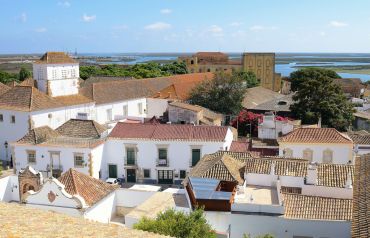Historic Centre of Evora
.jpg)
Évora in the southeastern part of Portugal called the open air is not by chance, because there are so many historical treasures of the entire city is entirely UNESCO World Heritage Site. And the Romans and Moors, the Portuguese kings and dynasties left a mark in the history of this city. Only monasteries and churches there are more than twenty.
Symbol of the city is the Roman Temple of Diana, which was built in the first century AD in honor of emperor Ogastutsa. Temple stood strong earthquake in 1755. On the three-meter granite platform survived 14 of 18 Corinthian columns.
Se Cathedral - granite Cathedral of Santa Maria Roman-Gothic style in 1250, in which you can see and hear the organ of the 16th century. The cathedral is also open museum of religious art.
Impressing visitors Bone Chapel, built in the 15th century near the church of St. Francis. Chapel got its name because the interior walls are covered and decorated with human bones and skulls. The chapel was built by a monk who wanted to convey to his brothers the idea that the earth's human life - it is only a temporary phenomenon.
One of the attractions of the city-museum - is size of Don Geraldo. In the Middle Ages it was a place for executions of heretics and witches. Now it is a big trade area with galleries and the current 16th century fountain.
University of Evora, without a doubt, a place with a rich history. Bylosnovan University in 1559 under the control of the Jesuits. Here were educated many European, in particular, the Portuguese poets, artists, painters and scientists. In our time here has about 6000 students.
Aqueduct Agua de Prata was built in 1532 to supply water to residents. Construction 9 kilometers in length was built rather quickly for the 16th century - in just six years.
In Evora, you can also visit the many palaces of the past centuries. Among them, the palace of King Manuel, which was erected in 1490. To our times are all authentic elements of the palace, namely - an elegant gallery. It is believed that this is where Vasco da Gama was in command of the fleet to make a trip to India.
Access to the historic center by bus Evora with Sete Rios bus station in Lisbon. To reach by car, you need to leave Lisbon on track A2, then turn on the track A6, and followed the track number 114, on which you can reach their destination.






.jpg)
.jpg)
.jpg)
.jpg)
.jpg)
.jpg)

.jpg)
.jpg)
.jpg)